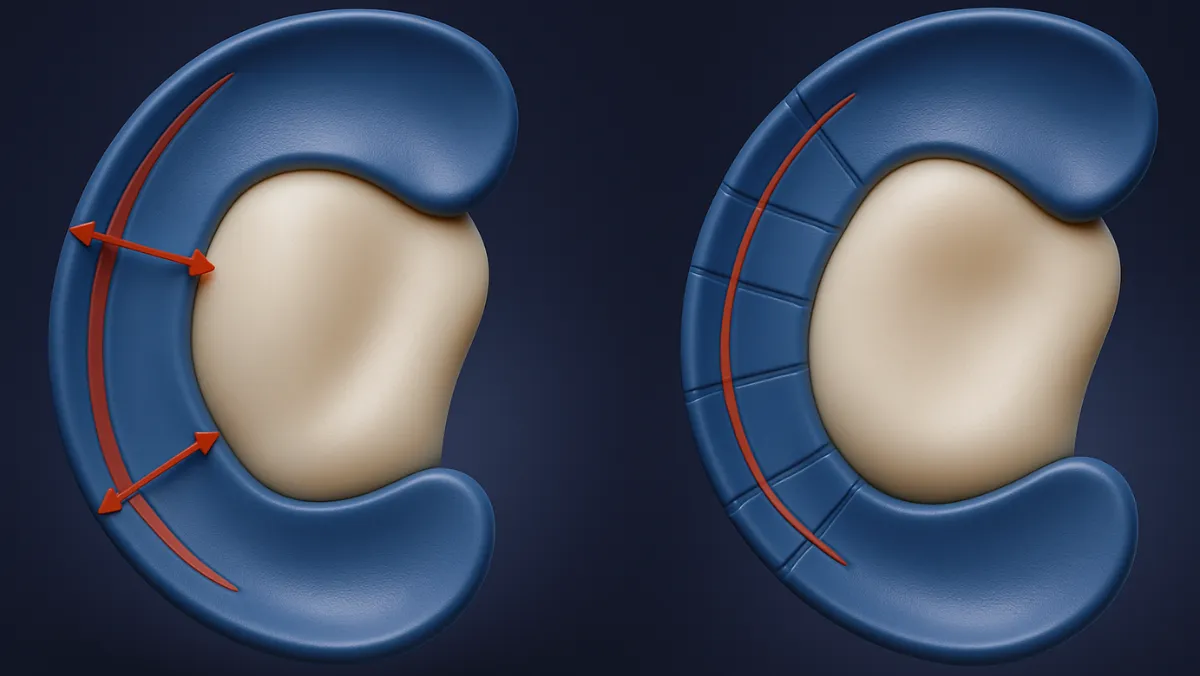
Safety Rate
The medial meniscus is a C-shaped cartilage structure on the inner side of the knee that cushions the joint, distributes weight, and provides stability between the thighbone (femur) and shinbone (tibia). When torn, the meniscus loses its ability to protect the knee, leading to pain, swelling, locking, and reduced mobility. These injuries often occur during sports activities, twisting motions, or as part of age-related degeneration.
Rather than removing the damaged tissue, arthroscopic medial meniscal repair focuses on restoring the meniscus to its natural form. Preserving the meniscus is crucial—it reduces the risk of arthritis, maintains joint biomechanics, and prolongs long-term knee health.
Not every meniscal tear requires surgery. However, arthroscopic repair is often chosen when:
Rehabilitation after arthroscopic medial meniscal repair is structured to protect healing and restore strength:
Although generally safe, arthroscopic meniscal repair carries some risks, including stiffness, incomplete healing, infection, or re-tear of the repaired tissue. Success rates are highest in patients who carefully follow rehabilitation protocols and allow sufficient healing time before returning to strenuous activity.
arthroscopic medial meniscal repair is a minimally invasive and highly effective procedure that restores stability, preserves joint function, and protects long-term knee health. By saving the meniscus instead of removing it, patients enjoy better mobility, reduced risk of arthritis, and a stronger foundation for an active lifestyle.
Arthroscopic repair of the medial meniscus is a minimally invasive surgical procedure used to fix tears in the inner cartilage of the knee. Small incisions allow the surgeon to insert a tiny camera and surgical instruments to remove damaged tissue or suture the torn meniscus. This technique preserves healthy cartilage, reduces post-operative pain, and speeds up recovery. Patients typically experience improved knee stability, reduced pain, and better mobility while minimizing risks compared to traditional open surgery.
The recovery time for arthroscopic medial meniscus repair generally ranges from 4 to 6 weeks for basic activities, with full recovery taking 3 to 6 months. Early post-operative care includes rest, ice, and limited weight-bearing to protect the repair. Physiotherapy begins soon after surgery to restore motion, strengthen surrounding muscles, and improve stability. Following the surgeon’s guidance and rehabilitation plan ensures safe healing and allows patients to return to sports or daily activities with minimal risk of re-injury
Yes, most patients can walk after arthroscopic meniscus surgery, often with the help of crutches or a walker initially. Weight-bearing is gradually increased as recommended by the surgeon, depending on the type and extent of the repair. Early gentle movement promotes healing, reduces stiffness, and prevents muscle weakening. Physiotherapy plays a vital role in restoring knee strength, flexibility, and balance. Within a few weeks, many patients are able to walk comfortably and resume light daily activities safely.
Take the first step towards pain-free living. Book your consultation today and discover personalized treatment options tailored to your needs.